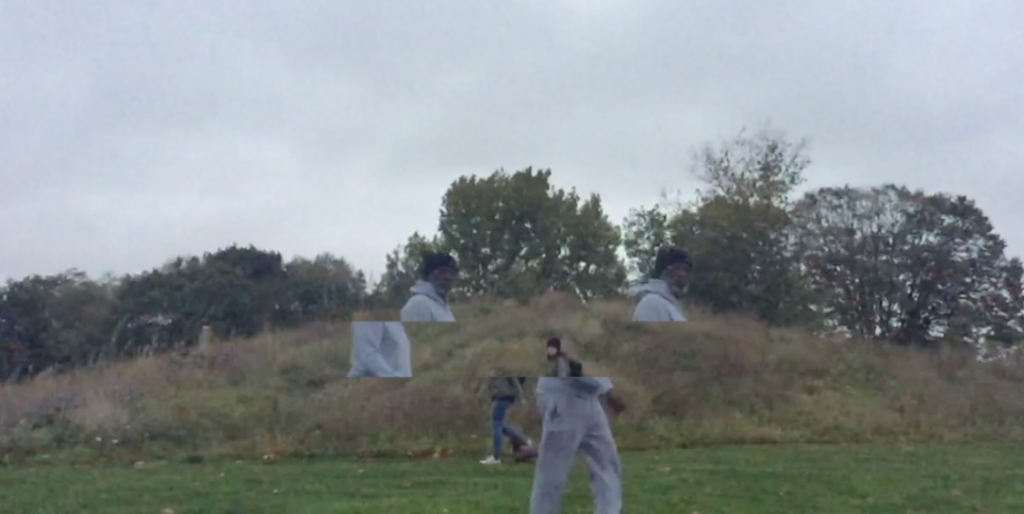https://www.thegreencenter.org/blog/the-lime-blossom-tea-incident
kills memory
The vampiric intensity with which I devoured content intended for other adults rather than children seems very strange now that I watch that material back, as I still do once every couple of years. It was all-consuming and I invited it with open arms, a welcome escape from what was otherwise a soul-crushingly dull day-to-day experience, the irrelevance of which felt so acutely by a teenager. One of my clearest memories of that time was from the point of view of my grandmother’s steps outside the back of her small house in Mickleton, a village close to mine. The weather was that grim mixture of hot sun and cold air, combined in a way that meant the clothes on your back become irritatingly warm but the heat doesn’t reach any further, and so internally you’re perpetually cold. It made me feel ill, and like kicking something. I had walked ahead of my father and grandmother (a bad habit that I still maintain) and was waiting for them to catch up, standing on the middle step, maybe trying to balance on the steel handrail that accompanied it. Whether I was listening to it on my red iPod Nano Chromatic or just had it stuck in my head on a tape loop, half a lyric from The Kills’ third record is attached to that memory like a caption, stamped into the image with a hot letter press. cute cut wrist cute cut wrist cute cut wrist cue? Cue cut wrist? What the fuck does that mean? cute cut cute cut with the with your cute cut wrist getting down with it cute cute cute and as I listened to that I watched the sun on the patio slabs and on the moss and the bird shit that was on the patio slabs and on the gap between the bottom of the door and step up from the patio slabs and I must not have seen any of it at the time because my thoughts were miles away, situated in my self-approximated location of the creators of this sweet sound at that time, somewhere interesting, really great, that didn’t have steel handrails on all the steps. The image of that place was empty of architectural structure but was bright and hued kind of red, with a grain on it, most likely a mental abstraction of the album cover. I would also spend a lot of time staring at that picture, trying to figure out if they were really on that bed or not, whether they’d been cut out and pasted on there with all that other stuff, the pictures and notebooks. But now, for whatever reason, I remember the place in which my body happened to be situated very well. I often wonder which allowed for the mental retention of the other.
29/04/2020 (cinnamon, toys)




http://thatsmyskull.blogspot.com/2005/12/mad-magazine-if-kids-designed-their.html



https://frieze.com/article/martin-honert

28/04/2020 (Richard Hell, Claire Denis)
But Richard was thoroughly disgusted with me when we finished shooting Nick Detroit. He was pissed at the long hours and moronic script, as well as being dope sick, and on the last day of shooting, he took his revenge by lecturing me in some dive bar about how, after I died, he was going to erect some monument to unworthiness. Richard snarled, “I’m going to assemble some half-assed structure over your grave site that spells out the word ‘I-N-C-O-M-P-E-T-E-N-T,’ made out of some cheap building material, like plaster of Paris, so that it dissolves in the rain, like oozing shit that dribbles on to your grave.”
https://www.thedailybeast.com/richard-hell-was-the-first-person-to-shoot-up-heroin-in-front-of-me?ref=scroll
21/04/2020 (Steven Shearer, Elliot Smith, Daniel Richter, Ed Ruscha)
https://gavinbrown.biz/uploads/900009/1387659634539/SSH_2011_ArtReview.pdf
Steven Shearer
http://meryn.ru/bunny/spiderbudyy/
http://meryn.ru/bunny/louise/
how is the camera moving faster than she is


The somewhat tautological title, The Final End, implies that this is the final work in the series, an inference subsequently rendered problematic by later works such as THE END #40 2003 (Tate AR00064), produced more than a decade after this one.
The canvas was prepared by masking off the thin vertical lines before the grey acrylic paint was applied using a spray gun. The letters were delineated with the use of stencils and masking tape while the paint used for the grasses was dripped onto the canvas. A layer of gloss was applied after the all the masking was removed.
The Final End demonstrates Ruscha’s interest in the histories of visual culture and graphic design, and in excavating the linguistic and visual tropes that characterise popular culture. As the artist has explained: ‘I have always operated on a kind of waste-retrieval method … I retrieve and renew things that have been forgotten or wasted.’ (Schwartz 2004, p.251.) The melancholic imagery in this painting – from the mournful title phrase to the sombre colours and gothic lettering – thus could be related to Ruscha’s interest in forgotten material. Even the reeds and rushes call to mind the vegetation that often consumes ancient ruins, adding to a sense of erasure and loss.” – Tate Modern


13/04/2020 (rose)

would it be interesting to paint this with the mark ups then retouch them back out or would that not be interesting at all
research 12/04/2020 pt. II (images from inside the computer)












12/04/2020 (V Brodmann, Dirk Bell, Shahin Afrassiabi)





icedancer
walk around dirty pradas smoking me dirty water just let me have it i know it when i hear it
dirty reeds i smell like rubber had to had to had to had to had. to
swear bout it keep calling me no talking about nothin man
came down for you drain god for you
walk

